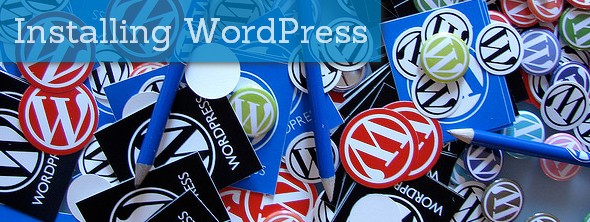
WordPress Installation - Those who're already familiar with WordPress know very well that a new WordPress blog can be installed very easily within 5 minutes in a few easy steps. Whether you're installing it on a home PC or on a live web server, the preliminary installation procedure will never take long hours as some may expect.
The best way to learn to install WordPress is to try it on your personal desktop. For that, first, you'll need a running web server instance to power your test blog. There are several software bundles that let you install a web server on a personal computer. These prepackaged web server bundles are pre-configured and are ready-to-use instantly after the installation procedure is complete.
The advantage of practicing WordPress installation on a local PC is that in the event of any failure you can safely delete the existing installation and can start afresh. Depending on the flavor of web server bundle you're using on your desktop, you can start the installation process after downloading WordPress. Here are some of the best tutorials that will help you learn installing WordPress on a personal computer.
- Installing WordPress on a desktop with XAMPP
- Deploying WordPress on a desktop with WampServer
- Running local WordPress installation on a BitNami Stack
- Installing WordPress on a local PC with EasyPHP
Once you've practiced enough and are quite comfortable installing WordPress on a local PC, you can move ahead and can perform a test install on a live web server. Simply installing WordPress is not the end of the road. You must also learn general WordPress and blog maintenance tasks to completely leverage the features of this powerful blogging engine.

Working knowledge of CSS & HTML - I've encountered lot of individuals who've developed sound knowledge of HTML and CSS despite their almost negligible knowledge about computer science and programming. Why is it so that people easily develop working knowledge of both these web development languages?
Whether you believe it or not, learning the basics of these languages is quite easy. With the advent of code inspecting tools for popular browsers, debugging and learning both these languages is easier than before. These tools let you inspect the source code of a live web page. You can even make changes to the code and can instantly preview the effects. You must use the following developer tools that will assist you in easily learning these languages in your favorite browser.
- Google Chrome Developer Tools (Complete Suite)
- All-in-one Developer Toolbar for Firefox Browser
- Safari Web Developer Suite for Mac Users
- Collection of Powerful Developer Tools for Opera Browser
I've developed my HTML and CSS skills the same way by inspecting the live code of web pages within the browser and then experimenting with it on a test page. It's not hard at all and all you need is some free time and one of the modern browsers equipped with its respective developer tools suite.
